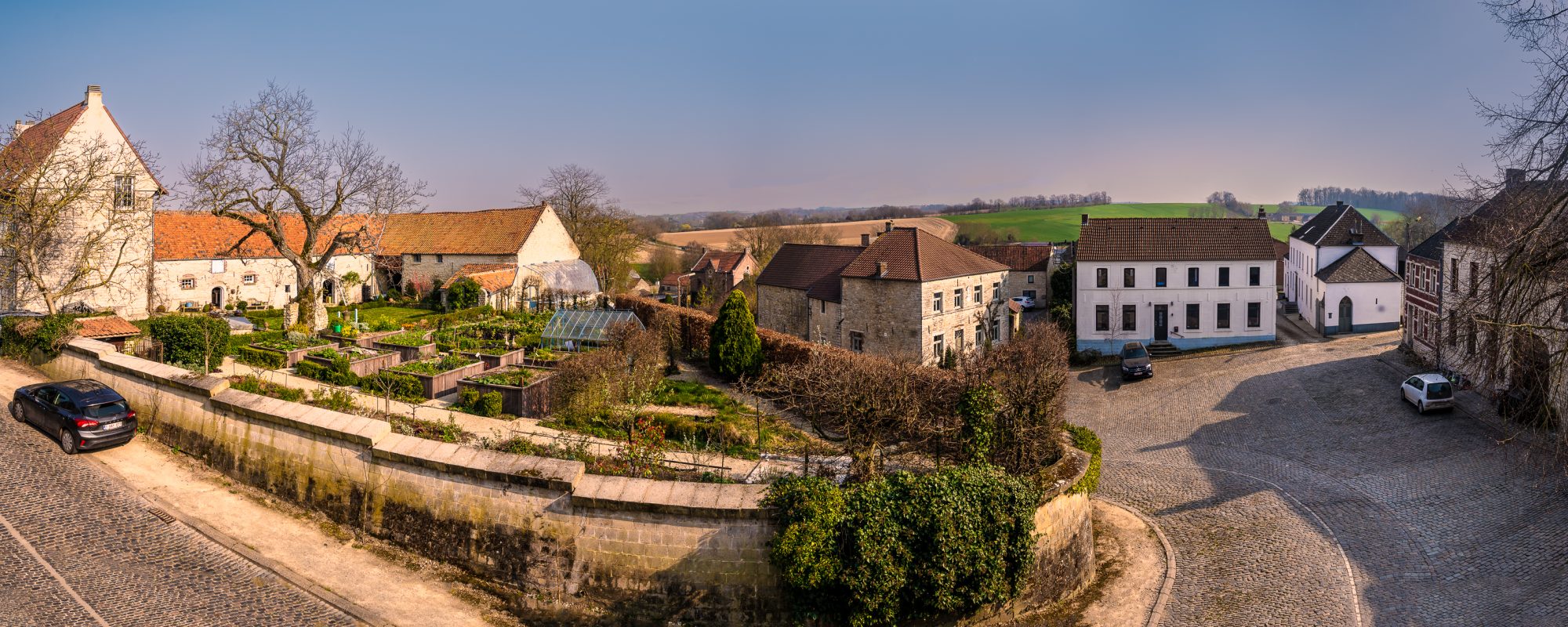Saint-Remy-Geest,Treasure in the white country
Just like the neighbouring village of Mélin, Saint-Remy-Geest walks its bright white streets and alleys and the time spent with them becomes a treasure of plenitude.

Just like the neighbouring village of Mélin, Saint-Remy-Geest walks its bright white streets and alleys and the time spent with them becomes a treasure of plenitude.

The sun is setting on the hillside where the village of Saint-Remy-Geest has settled at the very top, to the very south. At that moment, the glowing light catches every wall and sets the white-clad houses on fire. Time stands still. The church of Saint-Remy is the last to benefit from the rays. Built entirely of Gobertange stone, like most of the buildings in the village, the edifice stands proudly on this slope overlooking the valley. Rebuilt in 1768 in a classical style typical of the 18th century, it has clean lines, a very high bell tower and its sobriety is visible both inside and out. The village was organised around this dominant church.
Most of the houses and farms have retained their 18th and 19th century layout. There are many interesting properties such as a “Porch-dovecote” marking the entrance to an 18th century farm in the Rue de la Vanne, an old half-timbered barn, old L-shaped or three-celled farms, or “La Cense Bivort” and its garden. This 18th century U-shaped farmhouse is set below the church and its dwelling is topped with a coyote roof.
All the buildings are arranged along two parallel streets. A third transverse road links these two streets and leads to the bottom of the valley where one finds marshy meadows, copses of trees and old orchards. Bordered by willows, tall trees and sunken paths descending into the valley, this green setting envelops the village and constitutes a natural heritage of interest and ends up bewitching its visitors!
Nearby, it is at the Moulin de Genville, a hamlet of Saint-Remy-Geest, that nature invites you to visit! The mill itself, its garden and the adjoining meadows are protected areas. In the summer, a summer café welcomes you to enjoy the peace and quiet of the place.
Maison du Tourisme du Brabant wallon
Hôtel des Libertés – Grand-Place, 1
1370 Jodoigne
+32 (0) 10/ 56 09 70
The association Les Plus Beaux Villages de Wallonie (The Most Beautiful Villages of Wallonia) oversees a network of 32 villages, bearers of a strong territorial identity and reflecting traditional architecture. It is committed to promoting the rural, cultural and natural heritage of Wallonia and is a part of the development of local and responsible tourism.
More information